
Ostrów Tumski: The Heart of Wroclaw's History and Charm
Discover Ostrów Tumski in Wroclaw: A historic island with Gothic charm, serene river views, and romantic tales, perfect for history enthusiasts and wanderers alike.
Ostrów Tumski, Wroclaw's oldest part, is a magical island that transports visitors back in time. This enchanting neighbourhood is a blend of Gothic architecture, cobbled streets, and serene river views. As you walk through its narrow lanes, you'll be surrounded by centuries-old churches, including the awe-inspiring Cathedral of St. John the Baptist, which dominates the skyline with its twin spires. The cathedral's interior is equally breathtaking, with stunning stained glass windows and intricate altars. Ostrów Tumski is not just about historical landmarks. It is also a place of legends and local folklore. As dusk falls, the neighbourhood takes on a mystical aura with its old-fashioned gas lamps lit by hand. Strolling along the Oder River, you'll find picturesque views and peaceful spots perfect for reflection. The Tumski Bridge, also known as the Lovers' Bridge, is a romantic highlight where couples leave padlocks as a symbol of their everlasting love. The neighbourhood is a haven for those who appreciate tranquility and history. Take your time to explore the Archdiocese Museum, where religious artifacts and ancient manuscripts tell the story of Wroclaw's ecclesiastical past. Don't miss the Botanical Garden, an oasis of greenery that offers a delightful contrast to the historic buildings. Whether you're a history buff, a romantic, or simply in search of a serene escape, Ostrów Tumski offers a unique and unforgettable experience.
Local tips in Ostrów Tumski
- Visit the Cathedral of St. John the Baptist early in the morning to avoid the crowds.
- Don't miss the hand-lit gas lamps at dusk for a truly magical experience.
- Bring a padlock to leave on Tumski Bridge, especially if you're visiting with a loved one.
- Check the opening hours of the Archdiocese Museum before your visit as they can vary.
- Wear comfortable shoes; the cobbled streets can be uneven.
Ostrów Tumski: The Heart of Wroclaw's History and Charm
Ostrów Tumski, Wroclaw's oldest part, is a magical island that transports visitors back in time. This enchanting neighbourhood is a blend of Gothic architecture, cobbled streets, and serene river views. As you walk through its narrow lanes, you'll be surrounded by centuries-old churches, including the awe-inspiring Cathedral of St. John the Baptist, which dominates the skyline with its twin spires. The cathedral's interior is equally breathtaking, with stunning stained glass windows and intricate altars. Ostrów Tumski is not just about historical landmarks. It is also a place of legends and local folklore. As dusk falls, the neighbourhood takes on a mystical aura with its old-fashioned gas lamps lit by hand. Strolling along the Oder River, you'll find picturesque views and peaceful spots perfect for reflection. The Tumski Bridge, also known as the Lovers' Bridge, is a romantic highlight where couples leave padlocks as a symbol of their everlasting love. The neighbourhood is a haven for those who appreciate tranquility and history. Take your time to explore the Archdiocese Museum, where religious artifacts and ancient manuscripts tell the story of Wroclaw's ecclesiastical past. Don't miss the Botanical Garden, an oasis of greenery that offers a delightful contrast to the historic buildings. Whether you're a history buff, a romantic, or simply in search of a serene escape, Ostrów Tumski offers a unique and unforgettable experience.
Iconic landmarks you can’t miss
Tumski Bridge
Explore Tumski Bridge in Wrocław, a historical landmark adorned with love locks and stunning views, perfect for romantic strolls and memorable photographs.
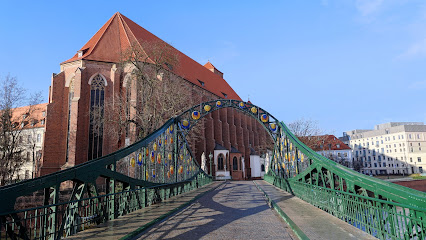
Cathedral of St. John the Baptist
Explore the stunning Cathedral of St. John the Baptist in Wrocław, a Gothic masterpiece rich in history and breathtaking architecture.
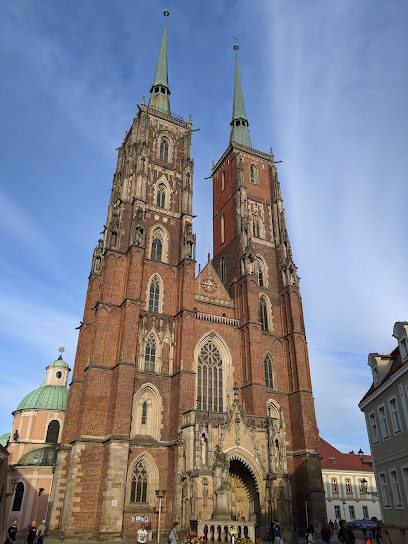
Bastion Ceglarski
Discover the historical charm of Bastion Ceglarski in Wrocław, where history meets stunning views in a serene park setting.
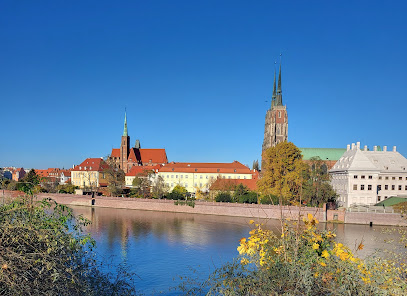
Ostrów Tumski, Wrocław
Experience the historical charm and serene beauty of Ostrów Tumski, a must-visit island in Wrocław, Poland, rich in Gothic architecture and culture.
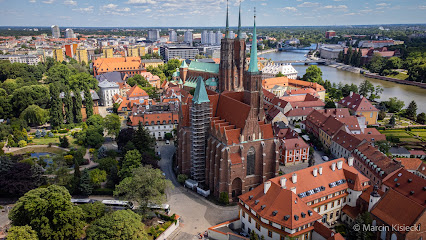
Restauracja Lwia Brama²
Experience the culinary elegance of Restauracja Lwia Brama in Wrocław, where Polish tradition meets European sophistication in a fine dining setting.
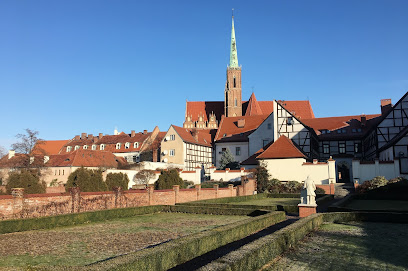
Brama kluskowa
Explore the historic Brama kluskowa, a stunning landmark in Wrocław that showcases the city's rich history and architectural beauty.
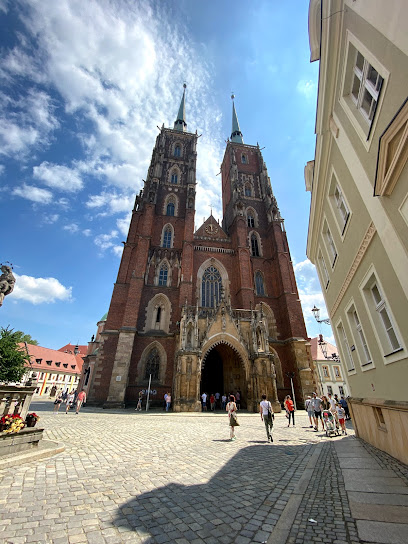
Statue of St. John Nepomunk
Explore the serene beauty of the Statue of St. John Nepomuk in Wrocław, a symbol of peace and a must-see landmark in Poland's vibrant city.
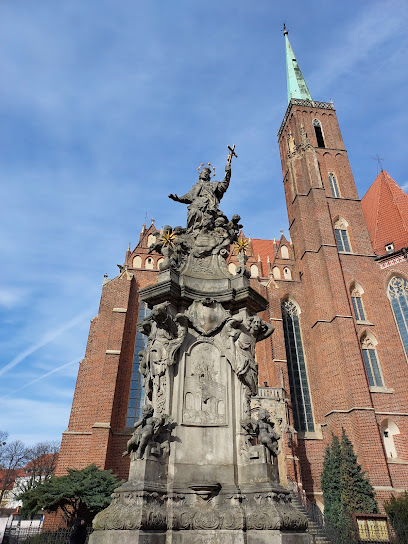
Archbishop's Palace in Wroclaw
Explore the stunning Archbishop's Palace in Wroclaw, an architectural marvel showcasing rich history and serene gardens in Poland's cultural heart.
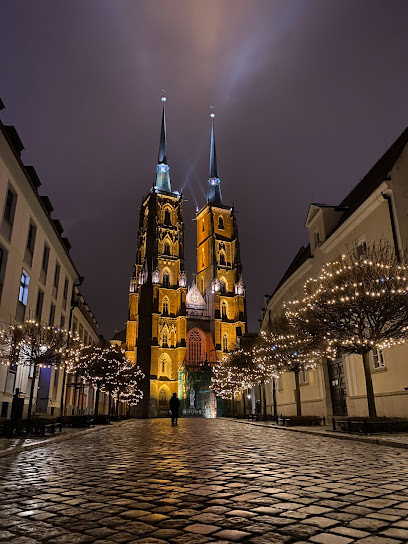
Statua Matki Bożej na Ostrowie Tumskim
Discover the serene beauty of the Statua Matki Bożej na Ostrowie Tumskim, a symbol of faith and history in Wrocław's picturesque Ostrow Tumski.

Krasnal Latarnik (Gazuś)
Explore the enchanting Krasnal Latarnik (Gazuś) sculpture in Wrocław, a whimsical symbol of the city nestled on Most Tumski, perfect for unforgettable photos.
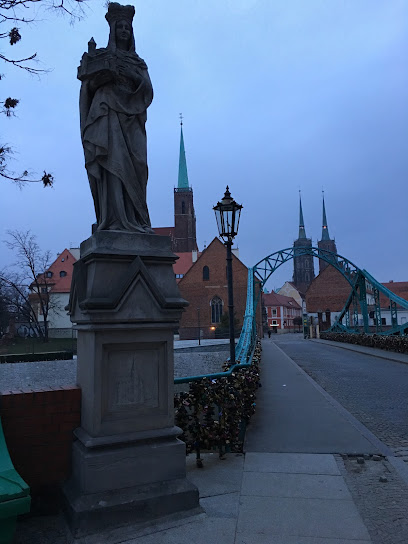
Cathedral Chapter House
Explore the architectural splendor and historical significance of Wrocław's Cathedral Chapter House, a cultural gem in Poland's vibrant city.
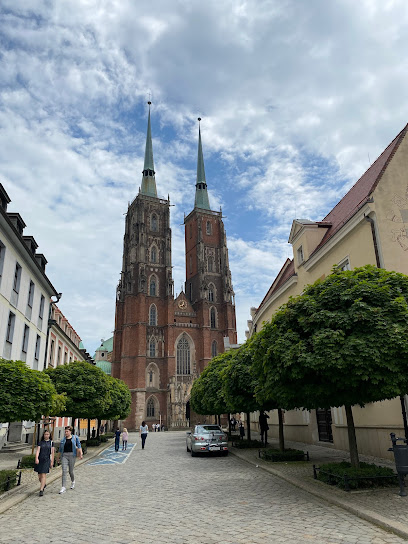
Plac Katedralny
Explore the stunning architecture and vibrant atmosphere of Plac Katedralny, Wrocław's captivating Cathedral Square, a must-visit tourist attraction.
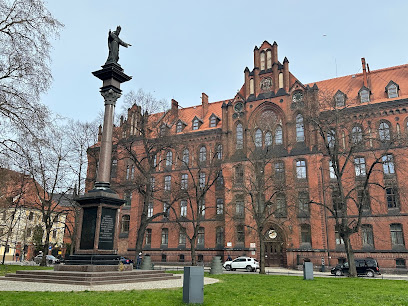
Unmissable attractions to see
Wrocław Market Square
Discover Wrocław Market Square, a vibrant historical hub filled with stunning architecture, lively atmosphere, and rich cultural heritage.
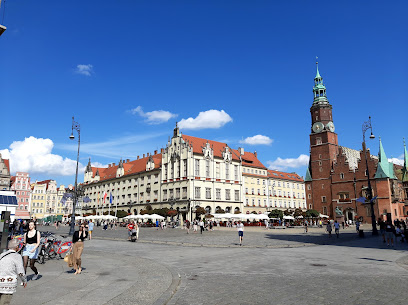
Bastion Ceglarski
Discover the majestic Bastion Ceglarski, a historical landmark in Wrocław that reveals the city's fortified past and stunning landscapes.
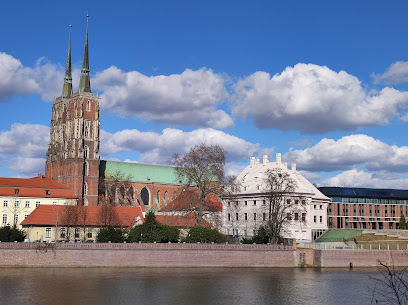
Brama kluskowa
Explore Brama Kluskowa, a historic gateway in Wrocław that showcases the city's rich architectural heritage and offers picturesque views.
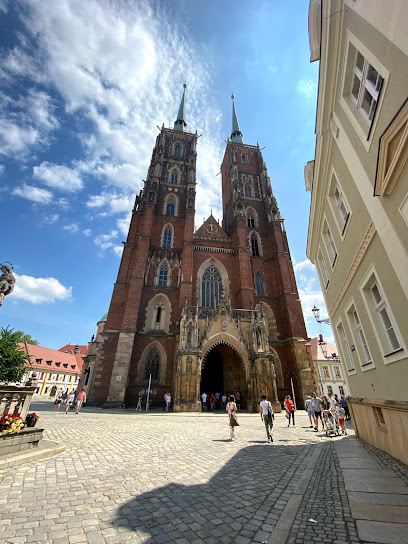
Statue of St. John Nepomunk
Discover the beauty and history of the Statue of St. John Nepomuk, a captivating landmark in Wrocław that symbolizes faith and artistic excellence.
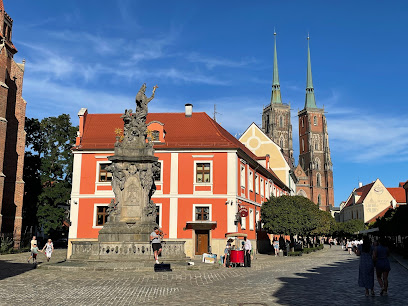
Archbishop's Palace in Wroclaw
Explore the stunning Archbishop's Palace in Wroclaw, a historical gem that showcases exquisite Baroque architecture and rich cultural heritage.
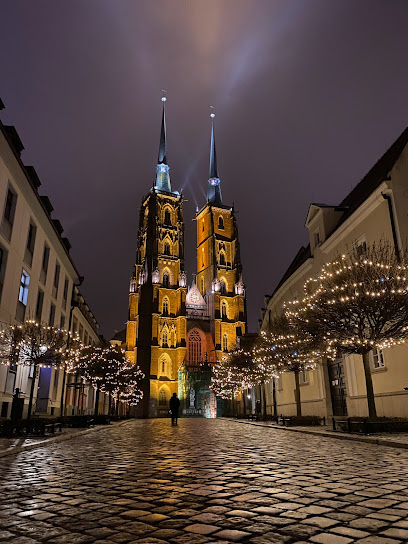
Krasnal CRAFTer
Explore the heart of Wrocław's craftsmanship at Krasnal CRAFTer, where local artisans showcase their unique creations in an inviting atmosphere.
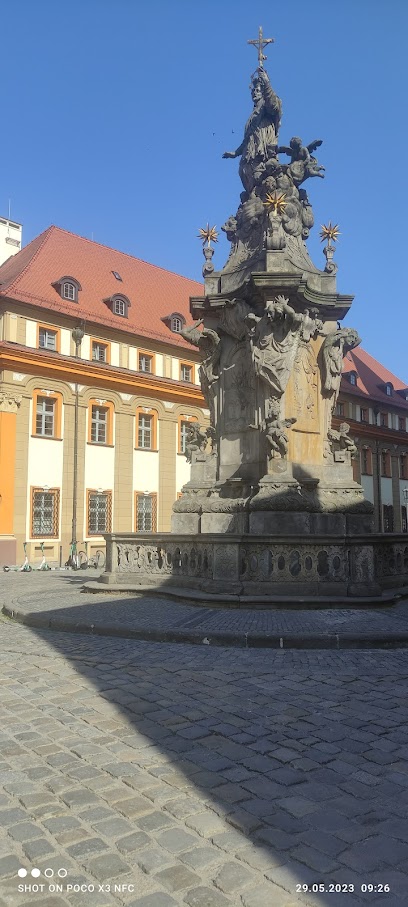
Plac Katedralny
Explore the beauty of Plac Katedralny in Wrocław, home to stunning architecture, vibrant culture, and serene riverside views.
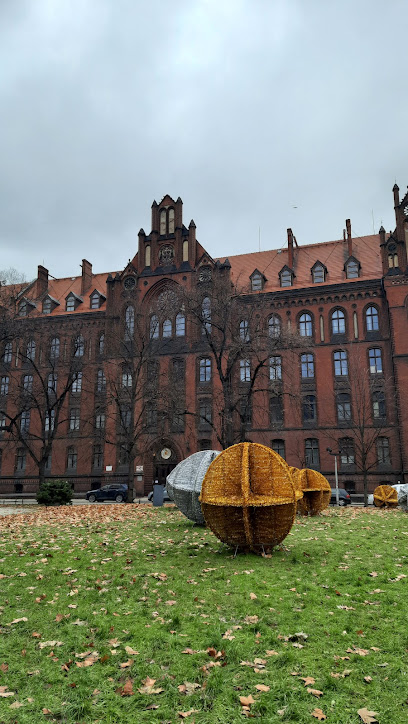
Essential places to dine
Whiskey in the Jar
Experience culinary excellence at Whiskey in the Jar - Wrocław's premier steakhouse offering gourmet burgers and local brews.
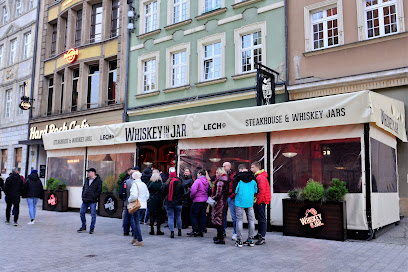
Konspira
Discover traditional Polish flavors at Konspira in Wrocław - where every dish tells a story of culture and heritage.
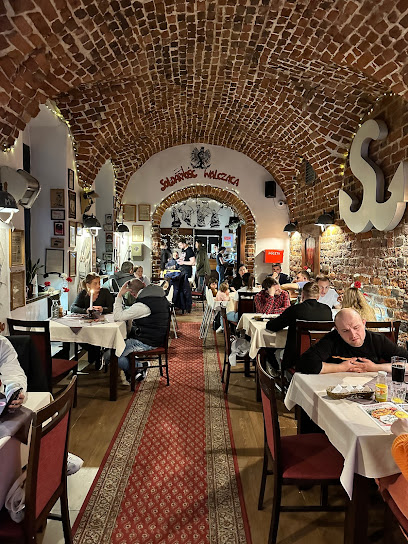
Ragu Pracownia Makaronu
Experience authentic Italian cuisine at Ragu Pracownia Makaronu in Wrocław—where handmade pasta meets traditional flavors.
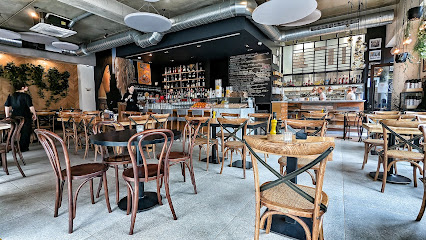
Targowa - Craft Beer and Food
Discover authentic Polish flavors at Targowa, where craft beer meets traditional cuisine in Wrocław's vibrant Stare Miasto.
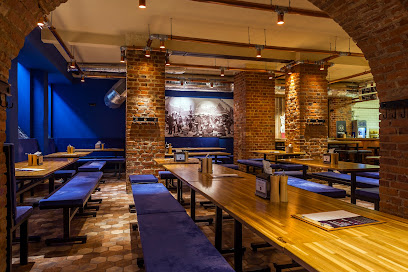
Stary Klasztor
Experience authentic Polish cuisine and vibrant cultural events at Stary Klasztor in Wrocław—where food meets festivity!
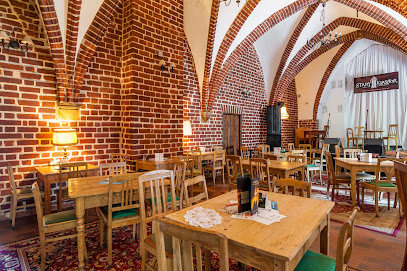
Oliwa i Ogień św. Marcina
Experience authentic Italian cuisine at Oliwa i Ogień św. Marcina in Wrocław - where every pizza tells a story.
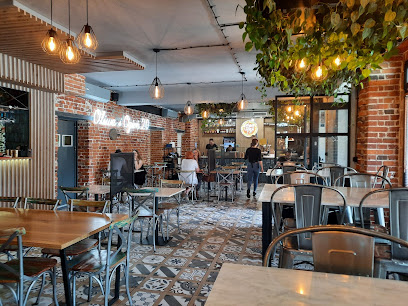
Pod Papugami Restaurant & Cocktail Bar
Experience modern European cuisine and vibrant nightlife at Pod Papugami Restaurant & Cocktail Bar in Wrocław.
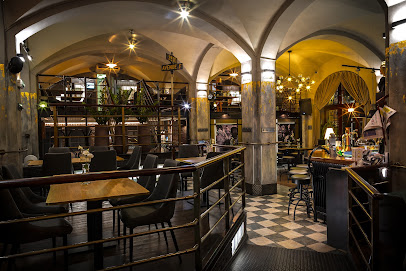
Restauracja Lwia Brama²
Experience exquisite Polish cuisine at Restauracja Lwia Brama² - where tradition meets modern elegance in Wrocław's vibrant dining scene.
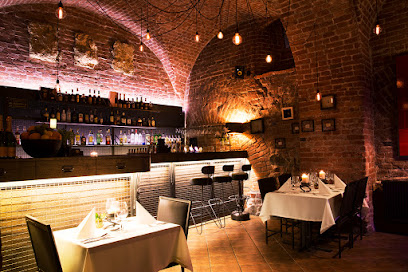
Bistro Trzy Schody - Pierogi - Obiady Domowe
Experience the best of Polish cuisine at Bistro Trzy Schody in Wrocław - home to delicious pierogi and comforting meals.
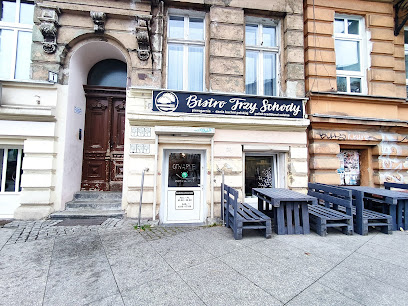
Rajskie Ogrody
Discover the flavors of Poland at Rajskie Ogrody - where traditional cuisine meets modern charm in Wrocław's heart.
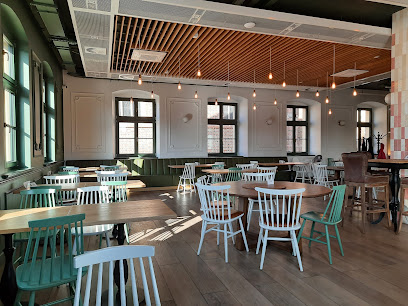
Taste
Discover the culinary gem of Wrocław at Taste - where exquisite flavors meet stunning views on Słodowa Island.
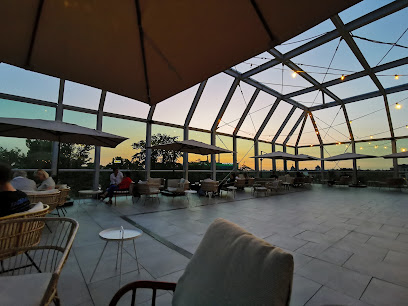
Craft
Experience the essence of Polish cuisine at Craft in Wrocław - where local flavors meet innovative culinary artistry.
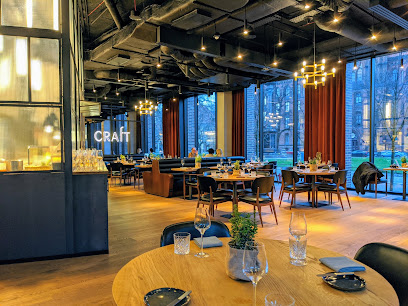
The Bridge street food
Discover Wrocław's fast food gem at The Bridge Street Food – where quick bites meet local flavors!

Markets, malls and hidden boutiques
Flying Tiger Copenhagen
Explore Flying Tiger Copenhagen in Wrocław for quirky gifts, home goods, toys, and more in a vibrant shopping experience.
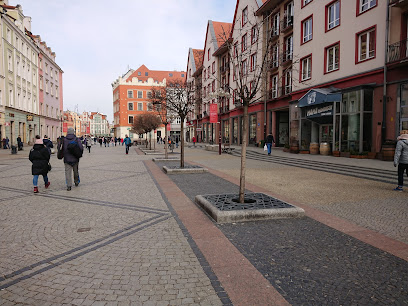
Wroclaw Info Souvenirs Centrum Informacji Turystycznej
Discover unique souvenirs and essential travel tips at the Wrocław Info Souvenirs Centre in the heart of the city.
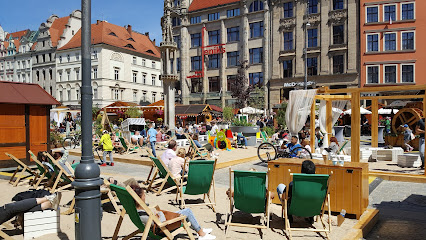
Folkstar
Explore Folkstar in Wrocław for unique Polish pottery and authentic souvenirs, perfect for capturing your travel memories.
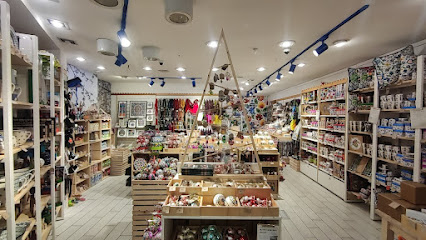
Galeria Mystica
Discover the enchanting Galeria Mystica in Wrocław, where artistry meets mysticism in a captivating shopping experience.
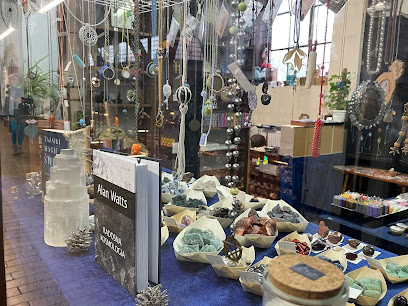
PRE-LOVED. vintage sklep
Explore the charm of vintage fashion and unique furniture at PRE-LOVED., Wrocław's top destination for sustainable shopping.
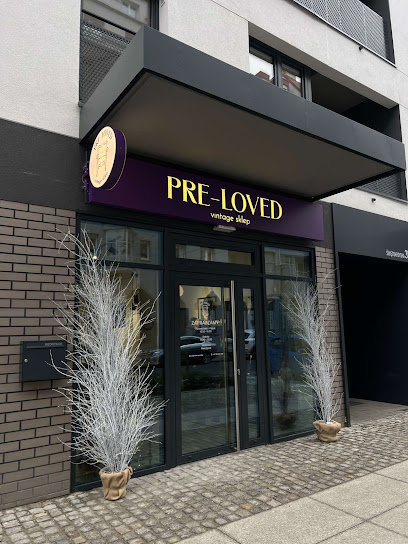
good good - coffeebar & concept store Wrocław
Explore Good Good in Wrocław for unique gifts, fashion accessories, and a cozy coffeebar experience, perfect for tourists seeking local treasures.
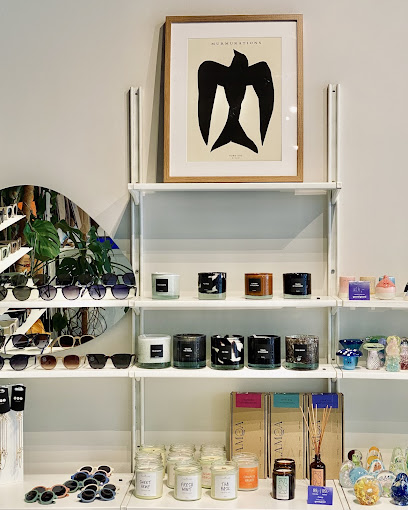
Prezenciarnia
Explore Prezenciarnia, the charming gift shop in Wrocław offering unique souvenirs and local artisan treasures.

Ankira
Discover Ankira in Wrocław: A stylish clothing store offering unique apparel that celebrates local culture and contemporary fashion.

Złotóweczka Punkt Wyprzedaży
Explore unique local products at Złotóweczka Punkt Wyprzedaży, a charming store in Wrocław, showcasing the best of Polish craftsmanship and culture.
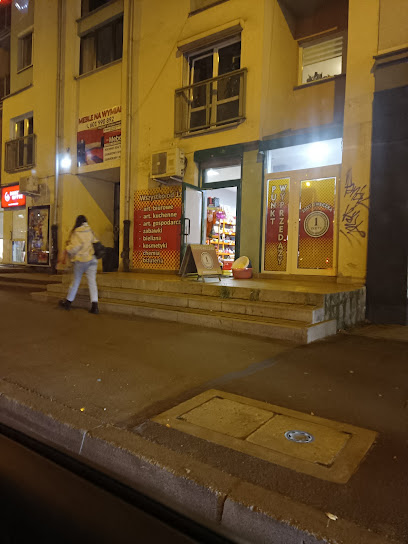
Girls On Fire
Explore the stylish world of Girls On Fire, a premier clothing store in Wrocław, where fashion meets individuality and trends come to life.

Essential bars & hidden hideouts
Pub Pod Trzema Miotłami
Discover the unique flavors of craft beer at Pub Pod Trzema Miotłami, a cozy brewpub in the heart of Wrocław's vibrant Stare Miasto.
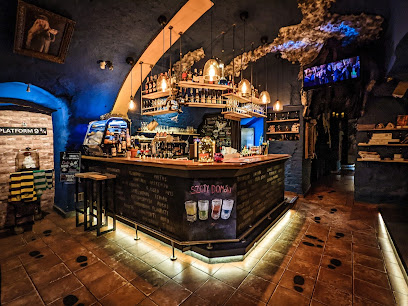
Barbarka
Discover Barbarka, a vibrant bar on Wrocław's Słodowa Island, offering stunning river views and a lively atmosphere for unforgettable moments.
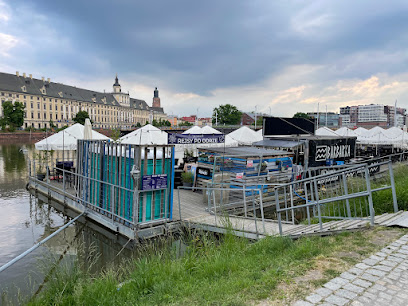
Craft
Experience culinary excellence at Craft Restaurant in Wrocław, where fresh ingredients meet innovative flavors in a vibrant atmosphere.
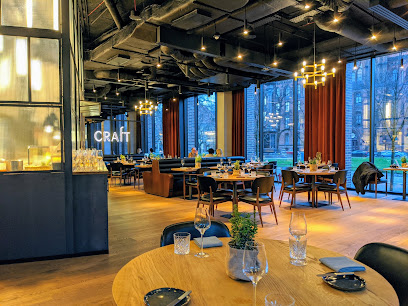
Elizium. Residence
Discover Elizium, Wrocław's charming bar offering a blend of local flavors and vibrant nightlife in a cozy atmosphere.
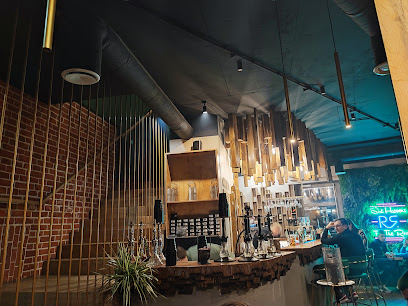
Raj Bar Beach Bar
Experience the perfect blend of relaxation and vibrant nightlife at Raj Bar Beach Bar in Wrocław, where delicious food and drinks await you.
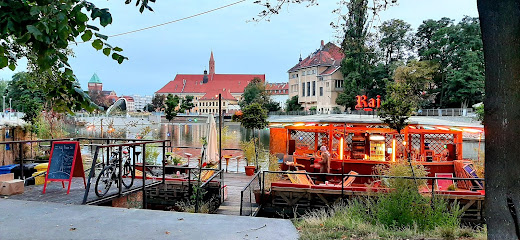
Zwodowani
Discover the lively bar scene at Zwodowani on Słodowa Island, Wrocław - a perfect spot to unwind with great drinks and vibrant ambiance.
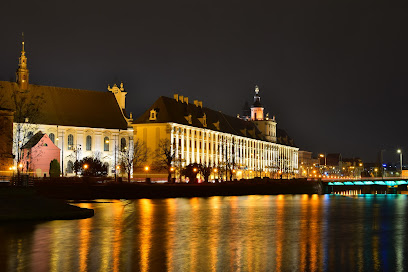
PUB BOTANIC
Experience the vibrant nightlife and delicious cuisine at PUB BOTANIC, a charming bar and restaurant in the heart of Wrocław, Poland.
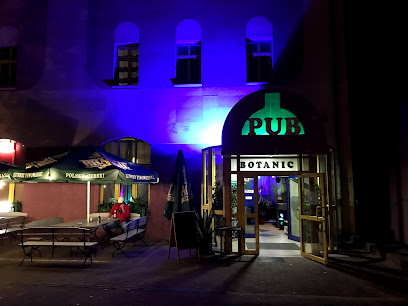
Ponton Pub & Bar
Experience the vibrant nightlife at Ponton Pub & Bar, a riverside retreat in Wrocław perfect for enjoying cocktails and scenic views.
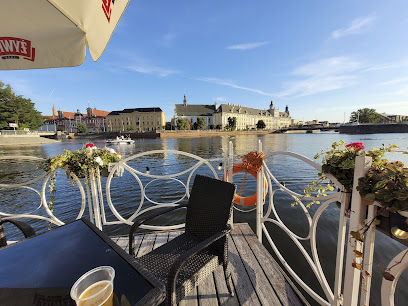
Moravia Wine Bar
Discover the exquisite taste of wines from around the world at Moravia Wine Bar in the heart of Wrocław, where charm and flavor unite.
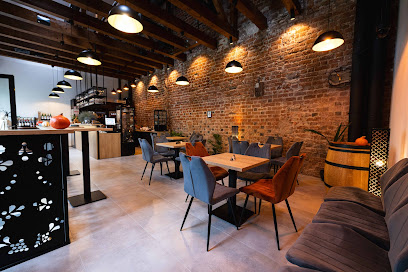
The Bridge Summer Bar
Experience the vibrant atmosphere and refreshing drinks at The Bridge Summer Bar in Wrocław, the perfect spot to unwind and soak in the local culture.
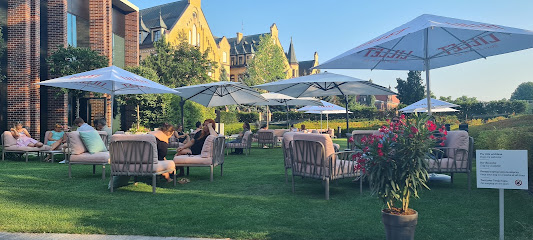
Local Phrases
-
- HelloCześć
[Cheshtch] - GoodbyeDo widzenia
[Do vidzenia] - YesTak
[Tak] - NoNie
[Nye] - Please/You're welcomeProszę
[Proshe] - Thank youDziękuję
[Jenkoo-yeh] - Excuse me/SorryPrzepraszam
[Pzheprasham] - How are you?Jak się masz?
[Yak sheh mash?] - Fine. And you?Dobrze. A ty?
[Dobzhe. Ah tee?] - Do you speak English?Czy mówisz po angielsku?
[Chy moovish po angyelskoo?] - I don't understandNie rozumiem
[Nye rozoom-yem]
- HelloCześć
-
- I'd like to see the menu, pleaseMógłbym zobaczyć menu, proszę
[Moogwim zobachich menoo, prosheh] - I don't eat meatNie jem mięsa
[Nye yem myensa] - Cheers!Na zdrowie!
[Na zdrovyeh!] - I would like to pay, pleaseChciałbym zapłacić, proszę
[Hchyawbim zapwatseetch, prosheh]
- I'd like to see the menu, pleaseMógłbym zobaczyć menu, proszę
-
- Help!Pomocy!
[Pomotsi!] - Go away!Odejdź!
[Odejch!] - Call the Police!Zadzwoń po policję!
[Zadzvon po politsyeh!] - Call a doctor!Zadzwoń po lekarza!
[Zadzvon po lekarza!] - I'm lostZgubiłem się
[Zgoobiwem sheh] - I'm illJestem chory
[Yestem hory]
- Help!Pomocy!
-
- I'd like to buy...Chciałbym kupić...
[Hchyawbim koopich...] - I'm just lookingTylko się rozglądam
[Tzyko sheh rozzglondam] - How much is it?Ile to kosztuje?
[Eele to kosh-too-yeh?] - That's too expensiveTo jest za drogie
[To yest za drogyeh] - Can you lower the price?Czy możesz obniżyć cenę?
[Chy mooszesh obneewich chenoo?]
- I'd like to buy...Chciałbym kupić...
-
- What time is it?Która godzina?
[Ktoora godzeena?] - It's one o'clockJest pierwsza
[Yest pyervsha] - Half past (10)Pół do dziesiątej
[Poo do jyesoontey] - MorningRano
[Rano] - AfternoonPopołudnie
[Popowoodnyeh] - EveningWieczór
[Viechoor] - YesterdayWczoraj
[Vchorey] - TodayDzisiaj
[Dzisay] - TomorrowJutro
[Yootro] - 1Jeden
[Yedehn] - 2Dwa
[Dvah] - 3Trzy
[Tshih] - 4Cztery
[Chtereh] - 5Pięć
[Pyench] - 6Sześć
[Shestch] - 7Siedem
[Shedem] - 8Osiem
[Oshem] - 9Dziewięć
[Dzyevnyehch] - 10Dziesięć
[Dzyesyench]
- What time is it?Która godzina?
-
- Where's a/the...?Gdzie jest...
[Gdje yest...] - What's the address?Jaki jest adres?
[Yaki yest adres?] - Can you show me (on the map)?Czy możesz mi pokazać (na mapie)?
[Chy mooszesh mee pokazach (na mapee)?] - When's the next (bus)?Kiedy jest następny (autobus)?
[Kyedy yest nastepny (owto-boos)?] - A ticket (to ....)Bilet (do ...)
[Bylet (do ...)]
- Where's a/the...?Gdzie jest...
History of Ostrów Tumski
-
Ostrów Tumski, the oldest part of Wroclaw, is believed to have been founded in the 10th century. It served as a crucial settlement and administrative center for the early Polish state. The strategic location on the Oder River facilitated trade and communication, paving the way for Wroclaw's development.
-
In the early 11th century, Ostrów Tumski became a significant religious site when the first cathedral, dedicated to St. John the Baptist, was constructed. This event marked the spread of Christianity in the region and established Ostrów Tumski as a prominent ecclesiastical center, influencing the spiritual life of Wroclaw.
-
The cathedral on Ostrów Tumski was rebuilt in the Romanesque style in the 12th century under the patronage of the Piast dynasty. It became the burial site for many Polish dukes and thus gained immense historical and cultural importance, further solidifying Ostrów Tumski's status in Polish history.
-
By the 13th century, the growth of Wroclaw as a trade hub led to the expansion of Ostrów Tumski. The construction of defensive walls and the establishment of market squares contributed to its development as a vital urban center. This period saw the emergence of various guilds and the flourishing of commerce.
-
During the 18th century, Ostrów Tumski experienced a cultural renaissance. The baroque style influenced architectural developments, with notable constructions such as the Church of the Holy Cross. This era enriched the cultural landscape of Wroclaw, showcasing the city's artistic and intellectual advancements.
-
Ostrów Tumski, like much of Wroclaw, suffered during World War II, with significant destruction to its architectural heritage. Post-war reconstruction efforts were initiated, leading to restorations that aimed to preserve the historical integrity of the area while adapting to modern needs.
-
Today, Ostrów Tumski remains a symbol of Wroclaw's rich history and cultural heritage. It attracts visitors with its stunning architecture, including the iconic Cathedral of St. John the Baptist, and serves as a focal point for various cultural and religious events, reflecting the enduring legacy of the neighborhood.
Ostrów Tumski Essentials
-
Ostrów Tumski is easily accessible from various parts of Wrocław. If you are arriving by train, the main railway station (Wrocław Główny) is about 2.5 km away. From the station, you can take tram line 1 or 2 towards the city center and get off at the 'Ostrów Tumski' stop. Alternatively, taxis and ride-sharing services are readily available. For those driving, paid parking is available nearby, but be mindful of local parking regulations.
-
Ostrów Tumski is a compact neighborhood, making it ideal for exploring on foot. Most attractions are within walking distance. If you prefer cycling, bike rentals are available in the city, and there are designated bike lanes. Public transport options include trams and buses, with stops located near the entrance to the island. However, within Ostrów Tumski, walking is the most enjoyable way to experience the historic surroundings.
-
Ostrów Tumski is generally safe for tourists, but standard precautions should be taken. Avoid poorly lit areas at night and keep an eye on your belongings, especially in crowded places. While there are no specific high-crime areas in this neighborhood targeting tourists, it is advisable to stay alert and avoid any isolated spots after dark.
-
In case of an emergency, dial 112 for police, fire, or medical assistance in Poland. There are local hospitals and clinics in Wrocław that can provide immediate care. It is advisable to have travel insurance that covers emergencies. For minor health issues, pharmacies are available throughout the city and typically offer over-the-counter medications.
-
Fashion: Do dress modestly, especially when visiting churches. Don't wear overly casual or revealing clothing in sacred spaces. Religion: Do respect local customs; it's customary to remove hats when entering religious sites. Public Transport: Do be polite and give up your seat for the elderly. Don't eat or drink on public transport. Greetings: Do greet with a friendly smile or handshake. Don't assume familiarity; wait for a cue before using first names. Eating & Drinking: Do try local dishes at restaurants and cafés. Don't leave food uneaten, as it can be seen as wasteful.
-
To experience Ostrów Tumski like a local, start your day with a stroll along the scenic banks of the Odra River. Visit the local café for a traditional Polish breakfast. Engage with local vendors at the nearby markets for fresh bread and pastries. Be sure to explore the stunning cathedral and enjoy the peaceful atmosphere of the island, especially in the early morning or late afternoon when the crowds are fewer. Don't forget to take a moment to enjoy the sunset from the Tumski Bridge for a truly memorable experience.
Trending Landmarks in Ostrów Tumski
Nearby Cities to Ostrów Tumski
-
Things To Do in Opole
-
Things To Do in Hradec Králové
-
Things To Do in Poznan
-
Things To Do in Gliwice
-
Things To Do in Czestochowa
-
Things To Do in Ostrava
-
Things To Do in Olomouc
-
Things To Do in Kutná Hora
-
Things To Do in Lodz
-
Things To Do in Bielsko-Biala
-
Things To Do in Brno
-
Things To Do in Prague
-
Things To Do in Dresden
-
Things To Do in Bydgoszcz
-
Things To Do in Krakow










